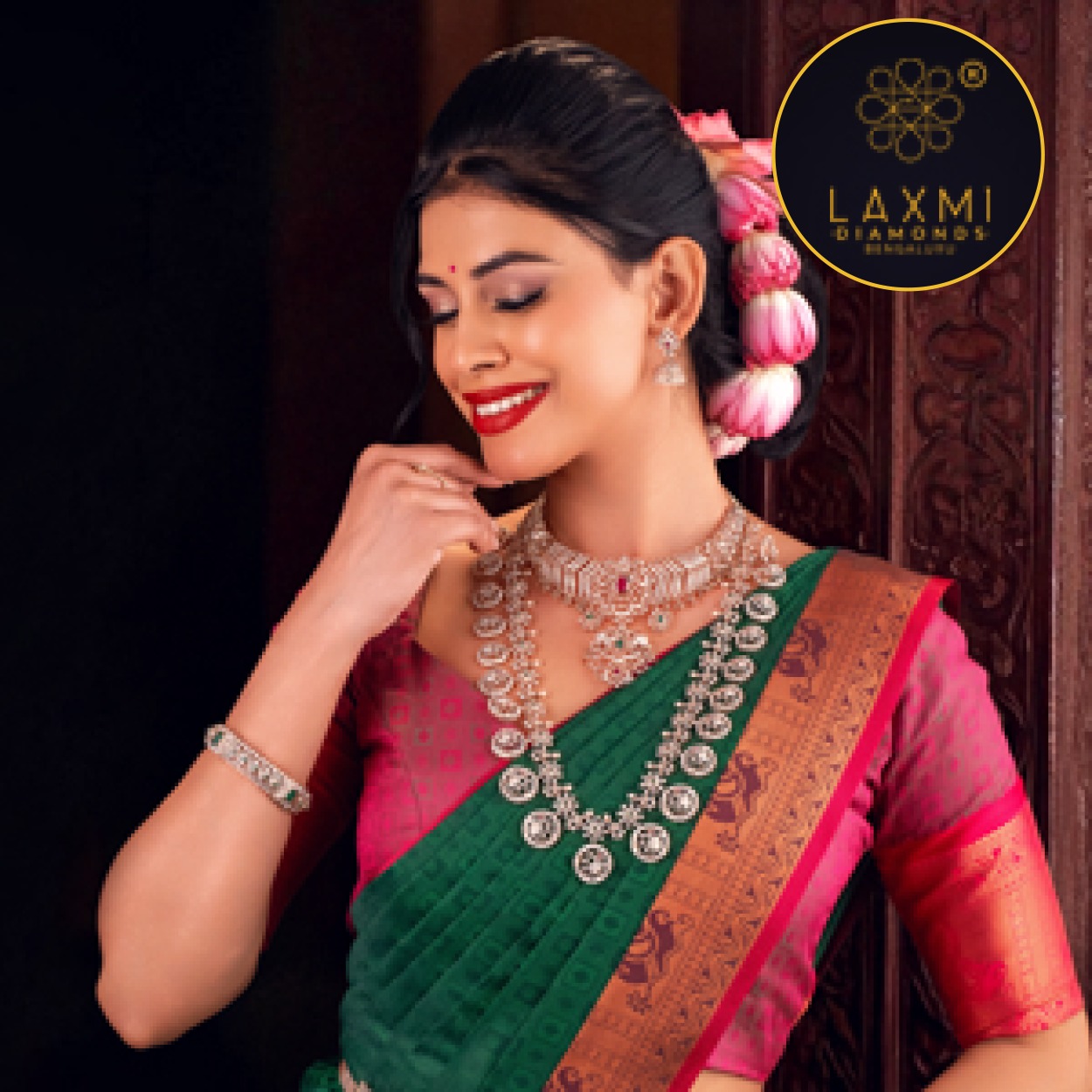Education
Natural and Lab-Grown Diamonds: Two Sparkling Paths Defining the Future of Luxury Jewellery”
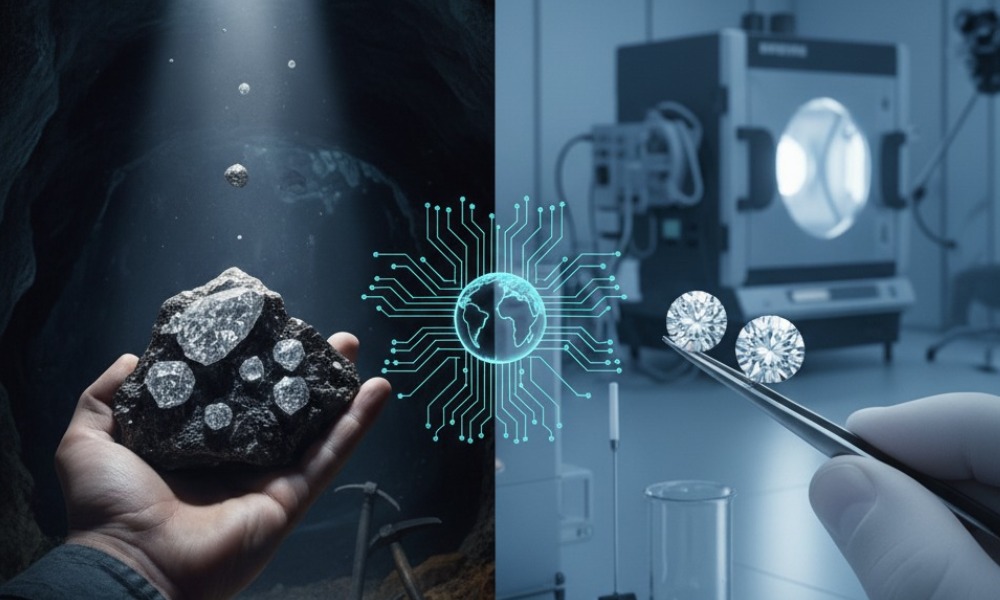
The diamond landscape is evolving faster than ever. As technology meets tradition, Natural and Lab-Grown Diamonds are redefining how consumers, retailers, and brands perceive luxury. Both share identical chemical and optical properties, yet their origins, pricing, sustainability factors, and emotional appeal set them apart.
With the global diamond market at a turning point, understanding these distinctions helps both jewellery buyers and industry professionals make informed decisions in 2025 and beyond.
From the Earth’s Depths to Cutting-Edge Labs
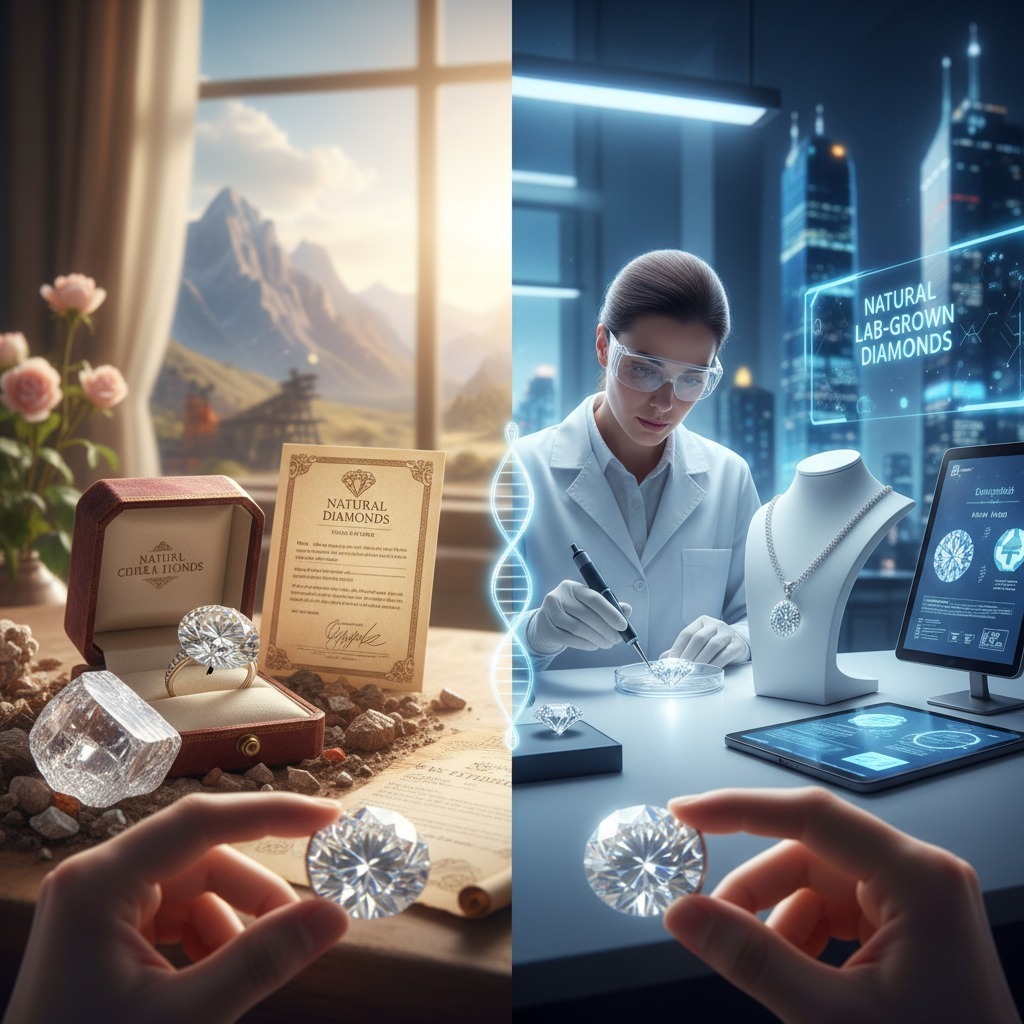
Natural diamonds are formed over billions of years deep within the Earth’s mantle under immense heat and pressure. They emerge through volcanic activity and are then mined, cut, and polished before reaching the consumer.
In contrast, lab-grown diamonds (LGDs) are created inside advanced laboratories using High Pressure High Temperature (HPHT) or Chemical Vapor Deposition (CVD) technology. These processes replicate natural conditions, producing diamonds that are chemically, physically, and optically identical to those mined from the Earth — but grown in a matter of weeks.
Appearance and Durability: Identical in Every Sparkle
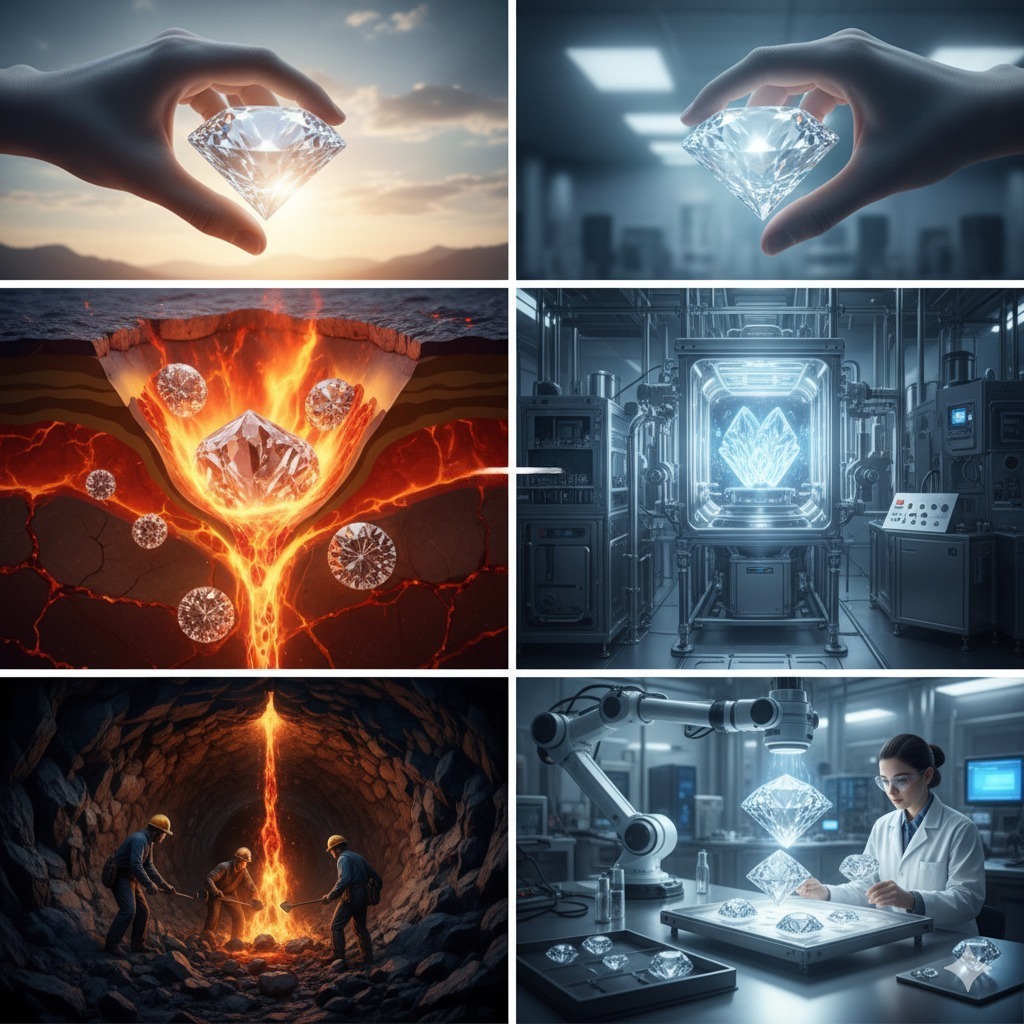
Both natural and lab-grown diamonds score a perfect 10 on the Mohs hardness scale, meaning they are equally durable, brilliant, and suitable for everyday wear. Even expert gemologists require specialized instruments to distinguish between the two.
Modern certification authorities such as GIA, IGI, and SGL ensure complete transparency by clearly mentioning whether a diamond is natural or lab-created on its grading report — maintaining consumer trust and industry integrity.
Pricing and Market Accessibility
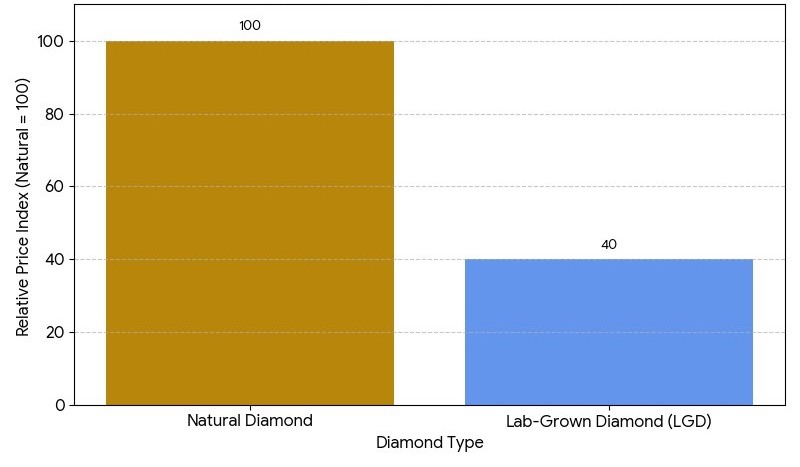
One of the most defining aspects of lab-grown diamonds is affordability. On average, they cost 50–80% less than natural diamonds of similar size and quality. This has opened the luxury jewellery market to younger, value-conscious consumers, particularly Millennials and Gen Z, who view LGDs as sustainable and budget-friendly choices.
However, natural diamonds continue to command premium value due to their rarity, heritage, and perceived emotional depth — making them a timeless investment for collectors and traditional buyers.
Sustainability and Ethics in Focus
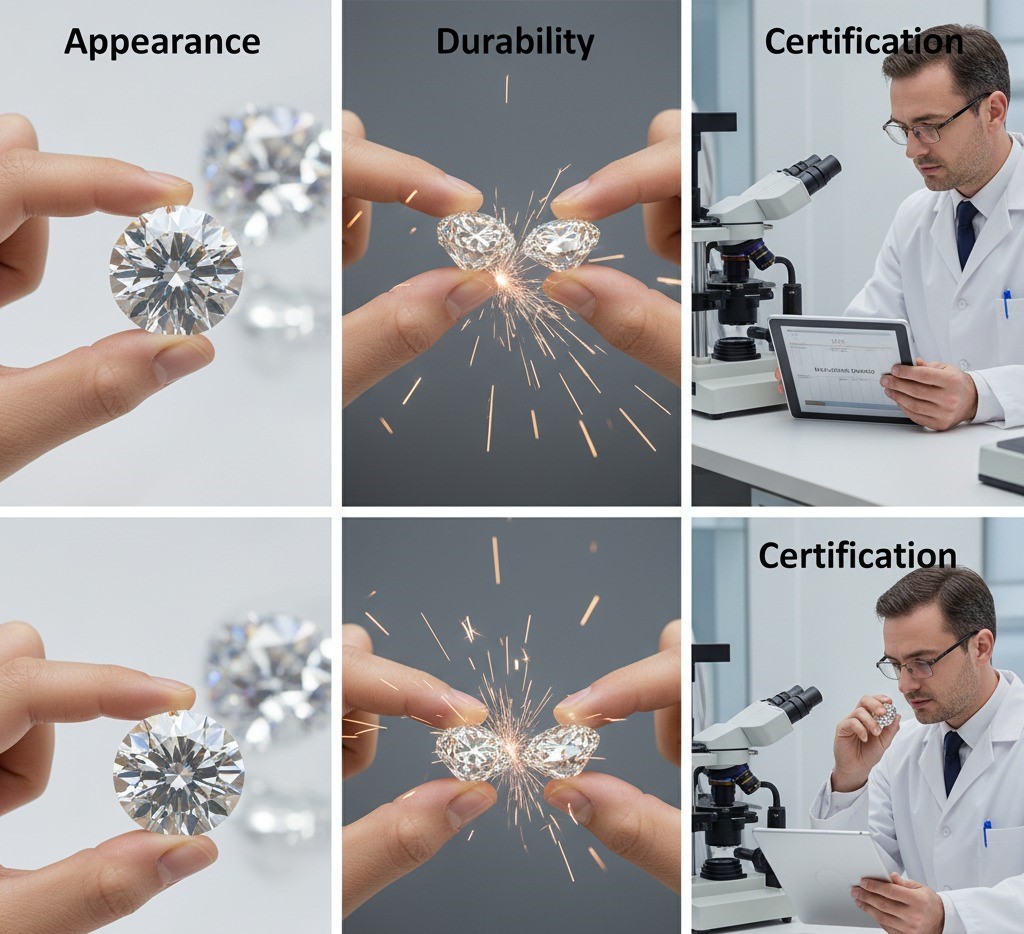
In today’s conscious consumer era, sustainability and ethical sourcing play a critical role in purchase decisions. Lab-grown diamonds have gained popularity for their minimal environmental footprint and traceable production methods.
Meanwhile, leading natural diamond mining companies have advanced significantly in eco-restoration, carbon reduction, and community programs, ensuring responsible mining practices. As both sectors innovate, the diamond industry as a whole is moving toward greater transparency and social responsibility.
India’s Pivotal Role in the Diamond Evolution

India, particularly Surat, has emerged as the global hub for lab-grown diamond production, driving exports and technological innovation. According to trade data, lab-grown diamond exports from India have surged sharply in 2025, solidifying the nation’s role as a world leader in both natural and synthetic diamond expertise.
Retailers across India are now offering dual counters — one for natural diamonds and another for lab-grown — to cater to the evolving preferences of modern consumers.
Changing Consumer Perceptions

The perception of lab-grown diamonds has shifted dramatically. Once viewed as “alternatives,” they are now celebrated as symbols of modern luxury and sustainability. However, natural diamonds continue to represent heritage, emotion, and exclusivity — values deeply rooted in the cultural and emotional fabric of jewellery buying.
The brilliance of a diamond, whether mined from the Earth or grown in a lab, remains eternal. The difference lies not in its sparkle, but in the story it tells — one of timeless beauty versus technological innovation.
As the jewellery industry embraces both, the future of diamonds is not about choosing one over the other — it’s about celebrating diversity, transparency, and conscious luxury.
Education
Generative AI is radically transforming jewellery designing
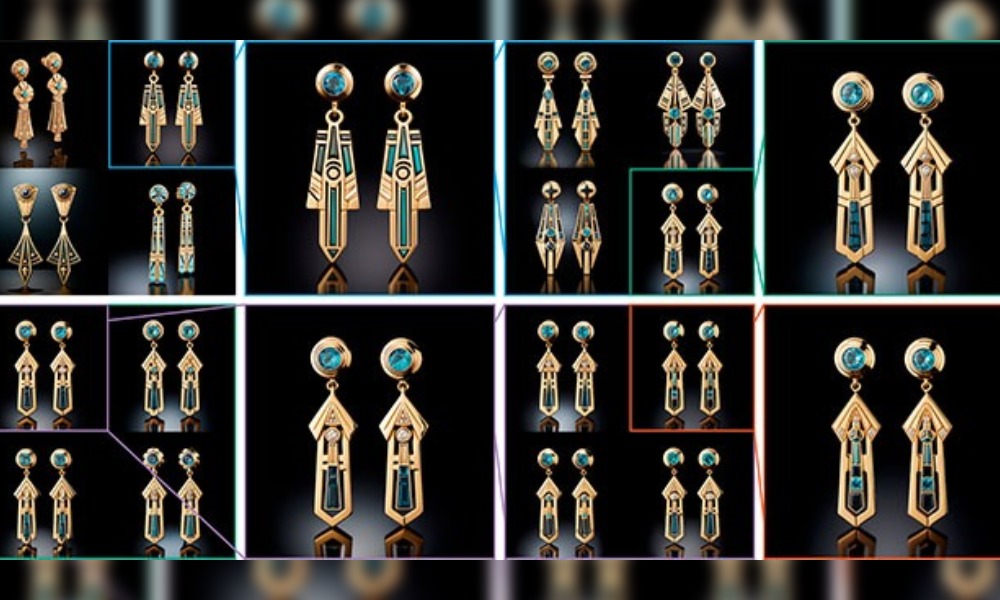
Generative Artificial Intelligence (AI) is transforming the traditionally manual field of jewelry design, introducing revolutionary tools alongside time-honored techniques. This paper explores the integration of generative AI in the design process, focusing on how programs like Midjourney, DALL.E, Stable Diffusion, Leonardo, and Firefly generate realistic jewelry images from text and image prompts. While these tools offer exciting possibilities for enhancing creativity, their use sparks significant ethical, legal, and regulatory debates.

AI as a Creative Partner
The core appeal of generative AI is its potential to function as an ultra-fast brainstorming partner, a concept dubbed “AIdeation.” By simply inputting a text prompt—for example, blending ancient Egyptian and Art Deco styles—a program like Midjourney can rapidly generate numerous unique design iterations, serving as stepping stones for a designer. This capability leverages what is called “hallucination” in AI—the creation of genuinely original, non-collaged compositions. The technology, however, is not perfect; generated images often contain design irregularities or features that are impossible to manufacture, highlighting that AI is currently better for ideation than for final design perfection.

Technical Overview and Program Comparison
Generative AI operates through complex machine learning algorithms, processing massive datasets to find patterns. Specifically, most image creation models, like diffusion models, work by iteratively adding and then subtracting “noise” from a random starting image until a recognizable, prompted image resolves. The effectiveness of the output is heavily influenced by the text prompt, which acts as a “steering” mechanism for the AI. Advanced tools like outpainting (expanding an image), inpainting (replacing a section), upscaling (increasing resolution), and blending (combining images) offer designers focused control over the generated art.

A comparative review of five popular programs shows varying strengths:
- Midjourney is highly popular for its detailed, creative, and realistic outputs, despite being accessed through the unfamiliar Discord interface.
- Stable Diffusion is an open-source, easily accessible option, though its images can be less artistic.
- DALL.E, integrated with ChatGPT, excels at conversational prompting but is slower.
- Leonardo.AI offers extensive control and the unique Realtime Canvas for live sketching.
- Adobe Firefly offers clear IP indemnification due to its training on licensed stock and public domain images, but its smaller dataset results in a lesser understanding of specific jewelry forms.
Ethical and Legal Challenges
The intersection of AI and art raises critical issues around authenticity, ownership, and copyright. The U.S. Copyright Office has clarified that works solely generated by an AI cannot be copyrighted as they lack human authorship, though a human’s significant modification of an AI-generated work may qualify. Furthermore, there are ethical concerns about the potential diminishment of manual craftsmanship and the risk of AI-generated designs infringing on existing intellectual property (IP) due to their training on copyrighted data. Companies like OpenAI are beginning to offer IP indemnification to address this. Ultimately, the industry must view AI as a tool to support human creators—enhancing their creative expression while retaining the paramount value of the designer’s skilled hands, material knowledge, and manufacturing expertise to bring the design to a tangible reality.
-

 National News3 hours ago
National News3 hours agoRBI accelerates repatriation of its gold reserves, 64 ton brought home last 6 months
-
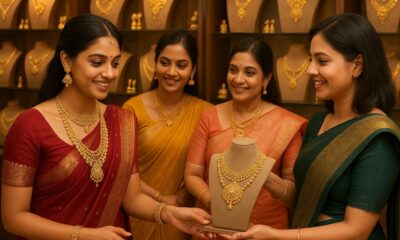
 National News4 hours ago
National News4 hours agoGold price decline will stimulate shopping during November-March wedding season
-

 DiamondBuzz1 hour ago
DiamondBuzz1 hour agoLesotho’s Largest Diamond Mine Faces Imminent Closure Without State Tax Relief
-

 GlamBuzz3 hours ago
GlamBuzz3 hours agoJennifer Lopez Named Ambassador for Zen Diamond






